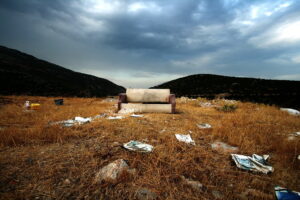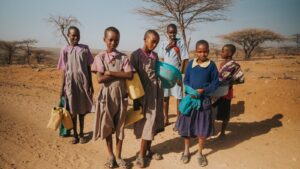Educational interventions: Policymaking lessons from the International Youth Concerned Society
As the last days of summer arrive and school days return, educational communities are finding themselves on the frontlines of climate-related policies and initiatives.

Across the world, there are countless examples of youth-led and organised movements aiming for direct environmental action. Less are focused on establishing global networks for debate, discussion, and knowledge sharing, as such the International Youth Concerned Society (IYCS) stands out among the crowd.
Established by Arnav Shreyash when he was 13 years old, today the 16-year-old is overseeing the development of a worldwide platform through which young people exchange ideas and support to tackle a number of social challenges. The fact this organisation sees those issues as interlinked means members are already years ahead of many governments.
‘Our aim was to discuss and think about the problems faced by the world these days, such as climate change, racial discrimination, violation of world peace, gender inequalities, and many more. We are trying to provide solutions to these problems at the youth level,’ Shreyash says of the IYCS.
‘We organised online Zoom events for webinars, meetings, and special sessions to raise awareness about the threat of climate change,’ he continues.’ ‘We upload meaningful posts on social media and encourage people to take action. On 18th December 2022 we organised a virtual Global Youth Summit. The agenda was the discussion of youth involvement in global agendas and ensuring the right actions, and enriching the spirit of advocacy.’

While much activity has been online, in 2023 IYCS launched its first offline programme. Cleanscape Cadence is 100% student-run and involves clean up operations and cleanliness drives in locations suffering from pollution and environmental problems. Two days of action have already taken place on the Gomti riverbank.
‘The Gomti enters Lucknow and winds its way through the city for about 19miles,’ says Shreyash. ‘However, in the Lucknow area the river faces a severe issue as 25 city drains pour untreated sewage directly into it… Plastic pollution in the Gomti River in Lucknow has [also] reached alarming levels, with plastic waste visible floating in the river between Pakka Bridge and Daliganj Bridge. Social organisations have continuously appealed for action to remove plastic pollution, but concrete measures to stop its influx have not been effective.
‘The situation becomes even more concerning when medical waste from private nursing homes is illegally dumped into the river, causing significant harm to aquatic life,’ he continues. ‘Currently, the river’s condition is dire, with a majority of the water capacity occupied by sewaage and contaminated water discharged from industries and sugar mills. As a result, most of the fish and other river creatures have perished, and the river has lost its biodiversity.’
All this sounds painfully familiar, even thousands of miles away from India. Raw sewage dumping has dramatically increased in UK coastal and inland waterways since the country’s departure from the EU and subsequent supply chain issues impacting wastewater treatment. Furthermore, the national biodiversity record is among the world’s worst.

Similarities don’t end there, either. IYCS was set up as a result of Shreyash and other young people not feeling they had a voice, or could be heard, in the climate conversation. And its aims focus on improving understandings of climate challenges and fostering thinking towards solutions.
Studies have consistently shown a widespread lack of belief among Britons that Westminster is acting on the environment in effective ways. Meanwhile, national curriculum-sanctioned climate education is so underfunded that according to The Breteau Foundation teachers spend their own money and free time developing resources and lesson plans. In both countries, there is growing demand for better knowledge exchange and rising sentiment that authorities cannot be relied on to take appropriate action.
‘The government should not only take our voices and concerns seriously, but also actively encourage collaboration with young individual changemakers like us,’ Shreyash says. ‘By promoting open dialogue and active involvement of young people and the public at large, the government can ensure their initiatives are more impactful and lead to positive change. It is essential for the government to work in tandem with various stakeholders, including youth organisations and social groups, to drive significant progress in tackling environmental challenges effectively.’
Food for thought, no matter where you’re reading from, policy and decision-makers only need look at Environment Journal‘s August report on a landmark ruling in the US to understand what can happen when demographics are excluded from the table, or, worse still, have concerns silenced through legislation. Montana’s attempt at blocking new climate law suits was deemed unconstitutional, and the state found guilty of failing to provide a safe and healthy environment for people to grow up in. A ruling that could have huge repercussions on legal precedent in America, and the perspectives of judiciary across the planet.
More features:
Breaking the stagnation cycle: The case for a greener political agenda
Climate control: Alternatives to F-gases for organisations and their estates
Here’s looking at you, Qatar: Water management in a desert state
















